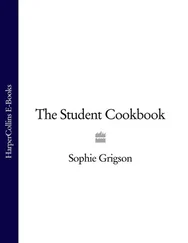• 1½ cups sliced carrots
• 1 cup diced onion
• 2 teaspoons salt
• 1 teaspoon freshly ground black pepper
• ½ cup chopped fresh parsley
• 2 tablespoons chopped fresh thyme
• 1½ teaspoons ground turmeric
• Chicken bouillon cubes (optional)
• 4 quart jars, lids, and bands
1. Prepare your jars by bringing them to a boil in a large pot. Once they reach a boil, reduce the heat to low, and allow them to simmer until you’re ready to use them. Prepare the lids and bands by simmering (not boiling) them over low heat in a small saucepan.
2. Prepare your canner by filling it with 2 to 3 inches of water and bringing it to a boil over high heat.
3. In a large stockpot over medium-high heat, combine the chicken stock, chicken, celery, carrots, and onion. Bring to a boil, reduce the heat to medium, and add the salt, pepper, parsley, thyme, and turmeric, stirring well.
4. Cover and simmer for 30 minutes. Add bouillon cubes, if desired. Cook until the bouillon cubes are dissolved.
5. Ladle the hot soup into the jars, leaving 1 inch of headspace.
6. Remove air bubbles, wipe rims, center the lids, and screw on the bands and adjust until they are fingertip tight. Place the jars in the canner.
7. Cover, vent, and pressurize the canner according to its manufacturer’s directions.
8. Process for 90 minutes at 10 pounds of pressure, adjusting for altitude. Remove the canner from the burner, and allow to cool before removing the jars.
• 2 cups chopped baby carrots
• 2 baking potatoes, cut into cubes
• 1 small sweet onion, chopped
• 2 stalks celery, chopped
• One-half small head cabbage, chopped
• 2 cups chopped tomatoes
• 2 cups green beans, cut into ½-inch pieces
• 2½ quarts chicken broth
• 1 quart vegetable stock
• 2 cups water
• 1½ teaspoons dried basil
• Pinch of rubbed sage
• Pinch of dried thyme
• Salt to taste
• 8 pint jars, lids, and bands
1. Prepare your jars by bringing them to a boil in a large pot. Once they reach a boil, reduce the heat to low, and allow them to simmer until you’re ready to use them. Prepare the lids and bands by simmering (not boiling) them over low heat in a small saucepan.
2. Prepare your canner by filling it with 2 to 3 inches of water and bringing it to a boil over high heat.
3. In a large stockpot over medium-high heat, combine all the ingredients except the salt and bring to a boil.
4. Cover, reduce the heat, and simmer 30 minutes. Season to taste with salt, if desired.
5. Ladle the hot soup into the jars, leaving 1 inch of headspace.
6. Remove air bubbles, wipe rims, center the lids, and screw on the bands and adjust until they are fingertip tight. Place the jars in the canner.
7. Cover, vent, and pressurize the canner according to its manufacturer’s directions.
8. Process for 90 minutes at 10 pounds of pressure, adjusting for altitude. Remove the canner from the burner, and allow to cool before removing the jars.
• 1 tablespoon olive oil
• 1 large onion
• 2 stalks celery, including leaves
• 2 large carrots
• 1 bunch green onions, chopped in long sections
• 8 cloves garlic, minced
• 8 sprigs fresh parsley
• 6 sprigs fresh thyme
• 2 bay leaves
• 1 teaspoon salt
• 2 quarts water
• 3 quart jars, lids, and bands
1. Prepare your jars by bringing them to a boil in a large pot. Once they reach a boil, reduce the heat to low, and allow them to simmer until you’re ready to use them. Prepare the lids and bands by simmering (not boiling) them over low heat in a small saucepan.
2. Prepare your canner by filling it with 2 to 3 inches of water and bringing it to a boil over high heat.
3. In a large stockpot over medium-high heat, combine all the ingredients and bring to a boil.
4. Cover, reduce the heat, and simmer for 30 minutes.
5. Strain the vegetables and spices, and discard the solids.
6. Ladle the hot stock into the jars, leaving 1 inch of headspace.
7. Remove air bubbles, wipe rims, center the lids, and screw on the bands and adjust until they are fingertip tight. Place the jars in the canner.
8. Cover, vent, and pressurize the canner according to its manufacturer’s directions.
9. Process for 90 minutes at 10 pounds of pressure, adjusting for altitude. Remove the canner from the burner, and allow to cool before removing the jars.
People don’t just like chili; they love it. Fortunately, it’s a filling and economical meal that’s great for lunch or dinner in any season. This chili is especially hearty and will be a big hit with your chili fans.
• 4 pounds boneless beef chuck roast or steak
• ¼ cup vegetable oil
• 3 cups chopped yellow onion
• 2 large garlic cloves, chopped
• 5 tablespoons chili powder
• 2 teaspoons cumin seed
• 2 teaspoons salt
• 1 teaspoon dried oregano
• ½ teaspoon freshly ground pepper
• ½ teaspoon ground coriander
• ½ teaspoon crushed red pepper
• 6 cups diced canned tomatoes with their juice
• 4 quart jars, lids, and bands
1. Prepare your jars by bringing them to a boil in a large pot. Once they reach a boil, reduce the heat to low, and allow them to simmer until you’re ready to use them. Prepare the lids and bands by simmering (not boiling) them over low heat in a small saucepan.
2. Prepare your canner by filling it with 2 to 3 inches of water and bringing it to a boil over high heat.
3. Cut the beef chuck into ½-inch cubes, removing any sinew or extra fat.
4. Heat the oil in a large, heavy stockpot and lightly brown the meat. Add the onions and garlic, and continue to cook until the onions are slightly soft.
5. Add all of the seasoning and spices, and cook for 5 minutes. Stir in the diced tomatoes, together with their juices.
6. Bring to a boil, reduce the heat to medium, and simmer for 50 minutes, stirring occasionally.
7. Ladle the hot chili into the jars, leaving 1 inch of headspace.
8. Remove air bubbles, wipe rims, center the lids, and screw on the bands and adjust until they are fingertip tight. Place the jars in the canner.
9. Cover, vent, and pressurize the canner according to its manufacturer’s directions.
10. Process for 90 minutes at 10 pounds of pressure, adjusting for altitude. Remove the canner from the burner, and allow to cool before removing the jars.
SECTION 3
Drying and Storing Your Food

12
DRYING RECIPES: PRODUCE, HERBS, AND MEATS
Drying is one of the earliest methods of preserving food, and it’s a fairly simple process. Native Americans used it all the time to cure meat and preserve stores of food for winter use to keep from starving. This simple, effective method allows you to save food in a manner that’s delicious, portable, and lasting: exactly the traits that you’re looking for in survival situations. Little equipment is needed, and most of it you probably already own or can pick up for minimal cost. The secret to the way dry foods work is the moisture levels are so low that the organisms that spoil food are unable to live.
Drying is a great way to preserve your harvest. Dried fruits and vegetables are delicious, lightweight, easy to make, and packed with nutrition. One important thing about drying your own food is that it saves a great deal of space. For instance, you can store 16 to 20 dried tomatoes in one quart-sized jar or resealable bag.
Читать дальше













